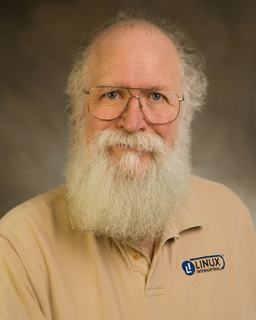
By Jon "maddog" Hall
I am the Eagle ... hope for the future and all that we can be, not what we are ... .
- John Denver, 1971
In today's world, we have a "digital divide," wherein some people have the means and tools to exploit technology and others do not. In most developing countries, people still pirate software because they cannot afford to pay for it. Since the software they pirate is typically closed source, they cannot change it to meet their needs.
Also, computers are still considered "hard to use," but most of this difficulty is encountered in installation, configuration, upgrading software, doing backups, battling viruses, filtering spam, and keeping systems secure. "Using" the computer sometimes takes a back seat to "caring for" a computer. Although many people advocate "cloud computing" to make computers easier to use, poor bandwidth and bad connections often make this impossible. What most people really need is access to information. Often the Internet is not 500 miles away, but only 50 feet away, and if we could bridge that 50-foot gap, people would have access to the information they need to participate in today's world.
An additional need in many places is jobs. I have been traveling the world talking about Linux and Free Software for 15 years. Everywhere I went people asked me the same thing: "How can I make a living with Free Software?"
Over the past five years I developed "Project Cauã," a project that will use thin clients to supply 90% of end users in very dense populations and employ many people in delivering this service. This year I was joined by two Brazilians, Douglas Conrad and André Franciosi. Recently we added a Board of Directors and Technical Board
Each installation will use thin clients and a highly available server with failover capabilities that will provide extra computing power and local storage of programs and data. Virtualization will keep all the programs and data separate from each other, whereas aggregation of Internet bandwidth will allow for high-speed input into the servers and up to the thin clients. At worst, each thin client will get the same Internet speeds as would normally be supplied individually. At best the thin client will experience a lot higher speeds for less cost.
Each thin client will also participate as an Over The Air (OTA) Digital TV receiver, allowing reception of high-speed bandwidth through those channels and act as a wireless mesh router with a wired backhaul to the server.
Each server (or small cluster of servers) will have its own Systems Administrator/Entrepreneur (SA/E) who will own the thin clients and server. Running the server and meeting the needs of their customers will be the job of the SA/E, who will be trained, certified, bonded, and licensed to have this job. The SA/Es will be their own bosses, and the harder they work, the more money they make.
Once installed, most of the SA/E's work can be done remotely from a home or apartment. We anticipate that single parents and physically challenged people will be able to have good jobs being SA/Es. We intend to tap into lists of unemployed people, training them, teaching them how to be entrepreneurs, and making them taxpayers. The funding for this will come from private enterprise, not from the government, and it will be self-sustaining.
Some parts of this project would work in countries like the United States. Certainly Project Cauã could reduce environmental impact and produce jobs, but it might not have as much of an effect in creating a wireless "bubble" because the U.S. is too thinly populated in a lot of places. In certain areas, such as Manhattan, Cauã might work fully.
If you have not guessed by now, Project Cauã will be piloted in Brazil. The cost structures, pay scales, and other factors fit perfectly. After the project is successfully piloted there, it will be piloted in other Latin American countries (including Mexico) to see if Cauã works elsewhere as well. Taken to its extreme, Project Cauã could generate 1 to 2 million new high-tech jobs inside of Brazil, with another 1 to 2 million new high-tech jobs in the rest of Latin America. Because it is a free and open project, other countries around the world can participate whenever they want.
You can read more about Project Cauã in my blogs [1] and at the project site [2]. Carpe Diem!
| INFO |
|
[1] Paw Prints: http://www.linuxpromagazine.com/Online/Blogs/
[2] Project Cauã: http://www.projectcaua.org/ |